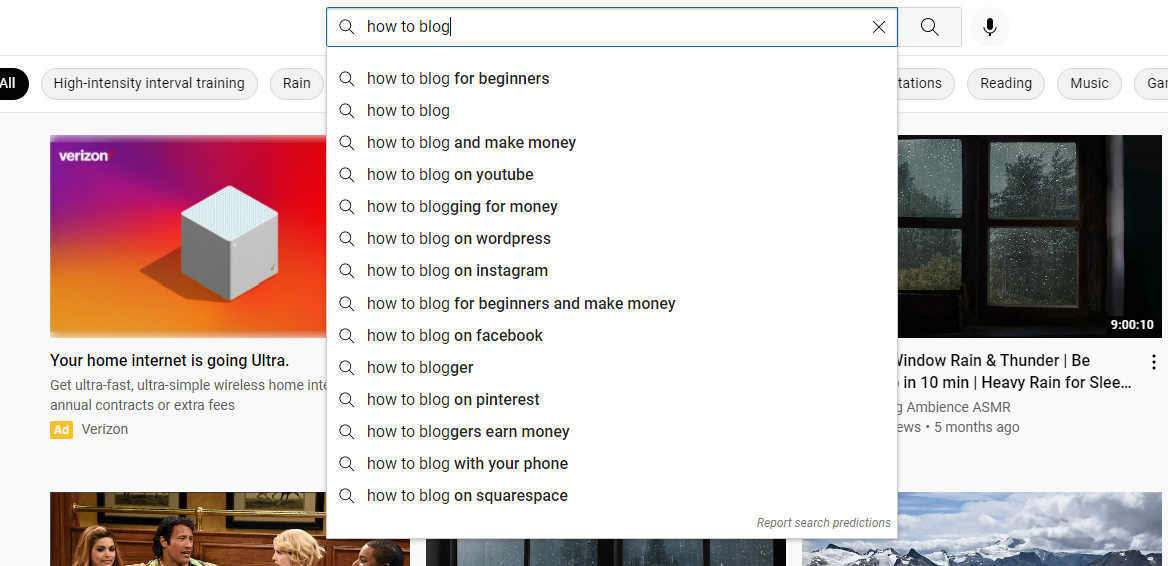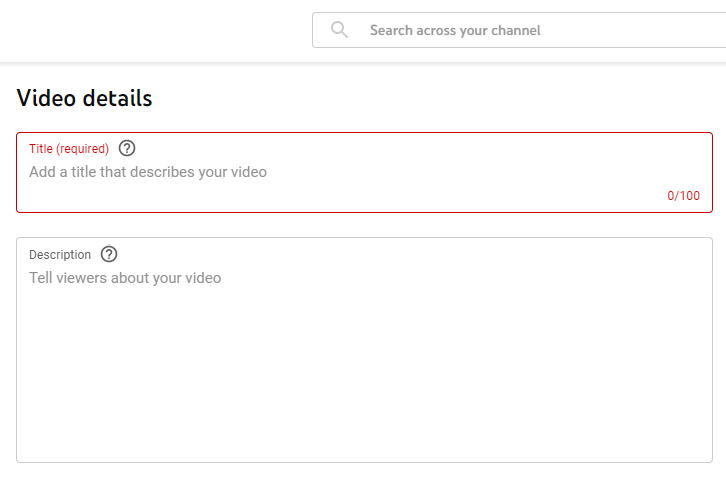There is no doubt that video content is becoming a gold mine. Users consume millions of video content daily on different platforms.
On the side of video creators, the competition is now fierce. Yet, video SEO strategy can get your videos in front of your target audience.
What is video SEO?
Simply put, video SEO is optimizing your video content to encourage search engines to index and rank them for target keywords. It involves setting metadata that is relevant to what users are searching for. The main goal is for the video to get as high a number of views as possible.
Is video SEO the same as website SEO?
Video SEO and website SEO aren’t the same, though they’re slightly related. YouTube is the second most used search engine after Google. YouTube videos, if optimized, can help the SEO of your web pages when they are embedded into them.
Users who visit your web pages are more likely to watch yours YouTube videos, which serves as an external source of traffic. Searches performed on YouTube and Google have different intent. Also, the process of optimizing content on both aren’t the same.
6 simple ways to boost the visibility of your video on search results
1. Create high-quality video content
Your target audience has interest in high-quality videos that can help solve their problems. Video hosting platforms also want to boost high-quality videos. Users engaging with high-quality videos can lead to long watch time and an increase in the number of returning visitors.
Such videos will get many likes, shares and positive comments, which are signals that trigger YouTube’s algorithm to boost its visibility. The algorithm suggests it to users who are likely to watch it and also shares it on other visual platforms like Instagram.
How do you create a high-quality video?
It begins with identifying the pain points of your target audience. YouTube keyword research tools can help you in this regard.
Alternatively, you can use the YouTube autocomplete to find questions users ask on YouTube.

Come up with a helpful solution and practical steps on how users can implement it.
Have a good camera if you want to show your face and a good microphone to enhance the audio quality. Record with free video recording tools like OBS Studio and edit your video to enhance its quality.
2. Get your video title and description Right
Video titles and descriptions speak volumes of your video content to the user and algorithms. Users depend on the title and description to decide if the video content has what they are looking for.
Titles and descriptions help the algorithm understand and recommend the video to users whose search queries match. If users click on your video after reading your title and it doesn’t fulfill their intent, they will hit the back button and go elsewhere. YouTube’s algorithm tracks this and will decrease your video’s rank if it consistently appears that users don’t find it helpful.
Do the following to write a well-optimized video title and description:
Add the target keyword you want to rank for in your video title. For YouTube, your video title shouldn’t be longer than 100 characters.

However, it’s recommended to keep your title within 70 characters to avoid being cut off in the search results. Also, place your keyword at the beginning of the title.
Your video description isn’t different from webpage meta descriptions. On YouTube, you can write a video description of 5000 characters. Here you describe, in detail, what your video content is all about.
A well-written video description can get the attention of the right audience that is more likely to watch the video in full. Again, your target keyword should appear in the first 100 characters so that the algorithm easily picks it up and suggest it to relevant users.
Avoid keyword stuffing while trying to optimize your video title and description. It sends the negative signal that you want to game the algorithm.
If you run out of ideas and can’t come up with good video titles and descriptions, there are AI copywriting tools with templates to help.
3. Choose a suitable video hosting platform
The platform where you host your videos matters when it comes to boosting the visibility of your videos. Some platforms do better than others. For example, YouTube has billions of viewers who watch different kinds of videos. The statistics speak for itself. There are other free videos hosting platforms like:
- Vimeo
- Twitch
- Daily Motion
Since boosting the visibility of your video is your goal, YouTube is the best. Its algorithm understands search intent of any form.
You don’t have to be an SEO guru to rank on YouTube. All it takes is to implement the simple tips which you learned in this piece.
4. Ensure your thumbnail is appealing
The first contact users have with a video is the thumbnail. It entices them to click on a video over others that appear on search result. No matter how good and helpful the content in your video is, nobody will click it if you don’t make it known on your thumbnail.
Video creators invest time into designing thumbnails that will outdo their competitors.
Why? An appealing thumbnail increases your click-through rate, which is a ranking factor on YouTube.
Although YouTube auto-generates a thumbnail from the video you upload, you shouldn’t rely on it. A custom thumbnail will make the difference because you can design it to capture the attention of users.
How do you create a custom thumbnail that will capture the attention of your target audience?
There are different graphics tools to design a custom thumbnail.
Canva is a common tool creators use. This is because it has pre-made templates for YouTube thumbnails.
So, instead of creating a design from scratch, you edit a template and customize it to suit your needs. Your thumbnail should contain these three key elements:
- The keyword you want to rank for
- A high-resolution image
- A blend of colors that will make the thumbnail look bright and attractive
If you are using other graphics design tools that don’t have YouTube templates, you have to optimize your thumbnails.
Do the following below:
- Set your dimensions at 1280 x 720 pixels (16:9 ratio) in .PNG, .BMG, GIF, .JPG. file formats
- Keep the size under 2MB
- Zoom in and out of your thumbnail to be sure it won’t lose quality
5. Upload your video’s Transcript
Transcribing your video helps search engines understand your video content better since it provides a verbatim overview.
Other benefits include:
- It allows users with listening difficulties to follow along with your video
- Google crawls the text for web-page ranking
- It creates a better user experience as users can read as they watch the video
Many video creators don’t see it as something worth doing. But the fact is that it matters. Otherwise, YouTube won’t have a feature that supports uploading of video transcripts.

6. Add hashtags to your videos accurately
A hashtag is the icing on the cake when combined with title and description optimization. It categories your videos, helps users to find your content on YouTube and also boosts the visibility of your video.
It works like other social media platforms, like Instagram and Twitter. YouTube hashtags appear in two places:
- Above the video title
- Inside the video description
Note that your hashtags should contain the focus and related keyword.
When you add hashtags to your video title, they appear there. When you add them to your video description, the first three are likely to show up above the video title.
Final Thought
Video SEO is a must especially on YouTube if you want the algorithm to recommend your content to your target audience.
Although it may be tasking, the benefits are numerous. I have shown you simple steps you can take to boost the visibility of your video on search results. It is left to you to start implementing what you’ve learnt.
